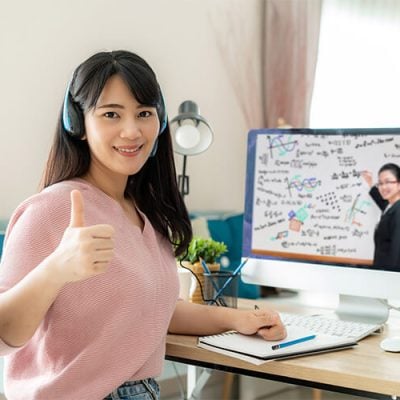Language Learning or Language Acquisition?
To be proficient in Spanish we need to do both
When it comes to learning a new language, understanding the process and the theory to become proficient is essential. Language learning and language acquisition are two different approaches, but the combination of both is instrumental for adult students. Let’s see what they are and how we can improve our new language greatly.
Language Acquisition
 Language acquisition occurs when a person is continually exposed to a language so that the person has “no choice” but to learn that language. This is the natural way to learn, and this is how we acquire our own first language. The acquisition process occurs subconsciously: we are not aware of grammatical rules or sentence construction, and the words and sounds come from different sources: father, mother caregiver, and they occur constantly and in diverse communication situations. If the sources speak different languages, a person will learn them. One example of this is my friend’s daughter, who was born in New York City. My friend and his wife decided that he will speak to their daughter only in Spanish his native language, her mother will speak only in Russian, her native language while family visitors, relatives, and school that would, of course, happen in English. The result, at age 6 she speaks 3 different languages fluently. It’s important to note that none of the sources included explanations or corrections, they just communicated with the young girl; they transmitted the language but did not teach it to her.
Language acquisition occurs when a person is continually exposed to a language so that the person has “no choice” but to learn that language. This is the natural way to learn, and this is how we acquire our own first language. The acquisition process occurs subconsciously: we are not aware of grammatical rules or sentence construction, and the words and sounds come from different sources: father, mother caregiver, and they occur constantly and in diverse communication situations. If the sources speak different languages, a person will learn them. One example of this is my friend’s daughter, who was born in New York City. My friend and his wife decided that he will speak to their daughter only in Spanish his native language, her mother will speak only in Russian, her native language while family visitors, relatives, and school that would, of course, happen in English. The result, at age 6 she speaks 3 different languages fluently. It’s important to note that none of the sources included explanations or corrections, they just communicated with the young girl; they transmitted the language but did not teach it to her.
Language learning
Language Learning is the result of deliberate instruction, with organized content, grammatical rules, pronunciation practice, multiple meanings of the same words, etc. Basic knowledge of the native language is presupposed to be able to create relations and comparisons between the different language systems. This organized instruction allows the student to understand what he hears or reads and to produce answers that are clear enough to make the communication happen.
To speak a new language fluently as adults both approaches are to be combined. It is true that language learning and language acquisition are different processes; they even occur at different parts of the brain. But if we were to concentrate only on learning through studying how it works, consciously and deliberately, it will not be enough to generate the ability to think in the target language and react spontaneously and immediately. That is why we need to expose ourselves to the language constantly; we need to use all the opportunities around us to use the new language; either because we live in a community that uses it or because we use technology platforms like apps, cable channels, and real-life situations with other people to create those environments.
So how can adults integrate the process of conscious deliberate learning with more natural, subconscious real-life experiences in a way that is effective and rewarding? Here are a few ways to do it:
Stay Curious
 Turn your mind from a passive into an active mode whenever you run into a new language. We hear it or read it when we are out of our homes or when we are connected to tech gadgets. Business signs, music, people in the street, restaurants, etc. Questioning and searching for answers brings a lot of new knowledge too, from pronunciation to word use to comprehension, all of which will improve our confidence. Here’s an example of a simple English question, “Do you work?”; in Spanish may be translated as, “Trabajas?” then you may ask how come a question that takes 3 words in English is just one word in Spanish. The answer to that question will teach us a lot. This is just an example of the many situations we run into in our daily lives, especially in the United States where over 41 million people speak Spanish.
Turn your mind from a passive into an active mode whenever you run into a new language. We hear it or read it when we are out of our homes or when we are connected to tech gadgets. Business signs, music, people in the street, restaurants, etc. Questioning and searching for answers brings a lot of new knowledge too, from pronunciation to word use to comprehension, all of which will improve our confidence. Here’s an example of a simple English question, “Do you work?”; in Spanish may be translated as, “Trabajas?” then you may ask how come a question that takes 3 words in English is just one word in Spanish. The answer to that question will teach us a lot. This is just an example of the many situations we run into in our daily lives, especially in the United States where over 41 million people speak Spanish.
Listen to Music in the Target Language
Music is just a click or a voice command away on our electronic devices. You have probably heard one or more songs in Spanish that call your attention; get the lyrics, listen to the song, use a translator app or dictionary, and most importantly enjoy the process, sing it to your friends in karaoke or sing it in the shower!
Watch the News
Watching, reading, or listening to the news you’ve already heard is a great exercise when you have acquired some language. Newspapers like the New York Times and Washington Post have an online Spanish section, and Spanish networks like Univision offer news in Spanish 24 hours a day, every day.
Watch Movies
Most movies and series offer captions; either same language caption, translation subtitles, or both. We may combine techniques: no caption, target language subtitles, or English subtitles to confirm meaning and combine different possibilities as we feel more comfortable with understanding.
Youtube
There are thousands of possibilities on Youtube; from watching a specific grammatical topic to documentaries, street talk, ted talks, music, and much more coming out every day.
I wish you the best in the learning-acquiring process, this is how I learned my English and how I’m being able to speak another new language.




 It is true that as adults we have limitations compared to children, or teenagers but, not the limitations you think. Adults have limited time, responsibilities, work and other personal circumstances. However, the biggest obstacle is the misconception that children are fantastic language learners while adults are somehow poor learners. This is just not true, except probably, when we consider having a native accent, which can mostly be achieved at a young age. Everybody has an accent, but as long as the pronunciation is good enough for others to understand, you will be able to communicate effectively. Also, children acquire the native language because they are surrounded by it intensely; children are not being tested or are afraid to make mistakes or sound foolish. Children learn a language because they have to. If a child is born in an English-speaking family, he will speak English but if he has to move to Germany at the age of 5 or 6 he will definitely have no choice but to speak German.
It is true that as adults we have limitations compared to children, or teenagers but, not the limitations you think. Adults have limited time, responsibilities, work and other personal circumstances. However, the biggest obstacle is the misconception that children are fantastic language learners while adults are somehow poor learners. This is just not true, except probably, when we consider having a native accent, which can mostly be achieved at a young age. Everybody has an accent, but as long as the pronunciation is good enough for others to understand, you will be able to communicate effectively. Also, children acquire the native language because they are surrounded by it intensely; children are not being tested or are afraid to make mistakes or sound foolish. Children learn a language because they have to. If a child is born in an English-speaking family, he will speak English but if he has to move to Germany at the age of 5 or 6 he will definitely have no choice but to speak German.







